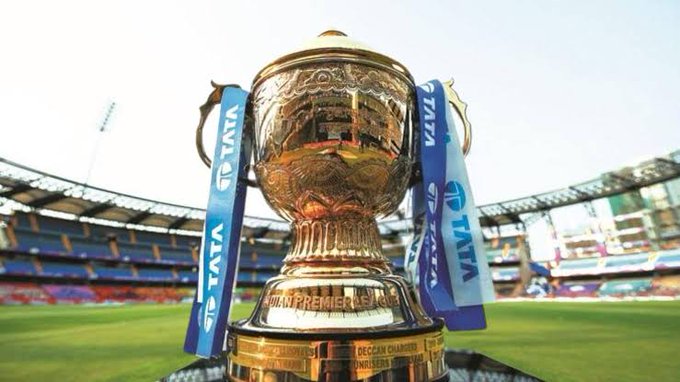The Indian Premier League (IPL) is more than just a cricket tournament; it’s a global sporting phenomenon that blends high-octane cricket, entertainment, and business acumen. Launched in 2008 by the Board of Control for Cricket in India (BCCI), the IPL has redefined the sport, turning it into a cultural and commercial juggernaut. As of 2025, the IPL continues to captivate millions, showcasing top-tier talent, fierce rivalries, and a unique blend of sport and showbiz.
Origins and Evolution
The IPL was born in the wake of the Twenty20 (T20) format’s rising popularity, which condensed cricket into a three-hour, action-packed spectacle. Inspired by leagues like the NBA and English Premier League, the BCCI envisioned a franchise-based model to modernize cricket. The inaugural season featured eight teams, each representing an Indian city, owned by a mix of business tycoons, Bollywood stars, and corporate giants. The league’s auction system, where players are bid on like prized assets, added a layer of intrigue and strategy.
Over the years, the IPL has grown in scale and ambition. By 2025, the league comprises 10 teams, with the addition of Gujarat Titans and Lucknow Super Giants in 2022. The tournament runs annually, typically from March to May, with matches played across iconic venues like Mumbai’s Wankhede Stadium and Kolkata’s Eden Gardens. Its franchise model has inspired similar T20 leagues worldwide, but none match the IPL’s financial muscle or fan fervor.
The Format
The IPL follows a T20 format, where each team faces 20 overs, making for fast-paced, high-scoring games. The league stage sees teams compete in a round-robin format, with the top four advancing to the playoffs, culminating in a grand final. The format rewards consistency but also allows for nail-biting upsets, as lower-ranked teams can topple giants in knockout matches.
The IPL’s innovation extends beyond cricket. The Strategic Timeout, cheerleader performances, and post-match parties have made it a complete entertainment package. The league’s embrace of technology, like the Decision Review System (DRS) and advanced analytics, ensures precision and fairness, while franchises leverage data to scout talent and devise strategies.
The Teams and Rivalries
The IPL’s 10 teams are city-based franchises, each with a distinct identity and fanbase. Powerhouses like Mumbai Indians (MI), Chennai Super Kings (CSK), and Kolkata Knight Riders (KKR) boast multiple titles and massive followings. Emerging teams like Gujarat Titans, who won the title in their debut year (2022), have added fresh dynamism. Each franchise is a blend of international stars, Indian veterans, and uncapped talents, creating a melting pot of cricketing prowess.
Rivalries are the IPL’s lifeblood. MI vs. CSK, dubbed the “El Clasico of Cricket,” is a clash of titans, fueled by their dominance and contrasting styles—MI’s aggressive flair against CSK’s calm resilience. Other heated matchups, like Royal Challengers Bangalore (RCB) vs. KKR or Delhi Capitals vs. Punjab Kings, ignite passions, with fans packing stadiums or glued to screens worldwide.
Star Power and Talent Incubation
The IPL is a stage for cricket’s biggest names. Legends like Virat Kohli, MS Dhoni, and Rohit Sharma share the spotlight with global stars like Jos Buttler, Rashid Khan, and Andre Russell. The league’s high-pressure environment tests players’ mettle, often shaping their international careers. For Indian players, an IPL contract is a ticket to stardom and a potential national team call-up.
Equally, the IPL is a breeding ground for young talent. Players like Yashasvi Jaiswal, Umran Malik, and Riyan Parag have risen from obscurity to prominence through standout performances. The league’s scouting system, including trials and academies, ensures a steady pipeline of talent, making it a vital cog in Indian cricket’s ecosystem.
Economic and Cultural Impact
The IPL is a financial behemoth. In 2022, its media rights were sold for over $6 billion, and its brand value is estimated at $10 billion as of 2025. Franchises generate revenue through sponsorships, ticket sales, and merchandise, while players command multimillion-dollar contracts. The league’s auctions, where bids can soar into crores, are a spectacle in themselves.
Culturally, the IPL transcends cricket. It unites India’s diverse populace, with fans from Kashmir to Kanyakumari rallying behind their teams. Bollywood celebrities, from Shah Rukh Khan (co-owner of KKR) to Preity Zinta (Punjab Kings), add glamour, while music concerts and fan festivals amplify the carnival vibe. The IPL’s global reach is staggering, with broadcasts in multiple languages and viewership spanning over 100 countries.
Challenges and Controversies
The IPL hasn’t been without hiccups. Controversies like the 2013 spot-fixing scandal, involving players and officials, dented its reputation. Off-field issues, such as franchise mismanagement or player burnout due to the grueling schedule, have sparked debate. The league’s commercialization has also drawn criticism, with purists arguing it prioritizes entertainment over cricketing tradition.
Logistical challenges, like hosting the tournament during India’s scorching summer or relocating seasons abroad (e.g., 2020 in the UAE due to COVID-19), test the BCCI’s resilience. Yet, the IPL’s ability to adapt—embracing bio-bubbles, virtual fan walls, and hybrid formats—has ensured its continuity.
The Future
As the IPL evolves, its ambitions are boundless. Plans for overseas matches, akin to the NFL’s international games, are in discussion to tap global markets. The league is also investing in women’s cricket, with the Women’s Premier League (WPL), launched in 2023, gaining traction. Technological advancements, like AI-driven analytics and immersive VR broadcasts, promise to enhance the fan experience.
Sustainability is another focus, with initiatives to reduce the IPL’s carbon footprint through eco-friendly stadiums and digital ticketing. The league’s commitment to grassroots cricket, via academies and talent hunts, ensures its legacy endures.
Conclusion
The Indian Premier League is cricket’s ultimate extravaganza, blending sport, entertainment, and commerce into a dazzling package. Its ability to innovate, adapt, and captivate has made it a global benchmark for sports leagues. As it enters its third decade, the IPL remains a celebration of cricket’s spirit, uniting fans, players, and cultures in a shared love for the game. Whether you’re a die-hard MI supporter or a neutral spectator, the IPL’s magic is impossible to resist.















Leave a Reply